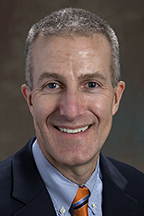By JASON CHUNG

Two months ago, I wrote about the potential impact of the Amazon purchase of Whole Foods on grocery prices. Both here and in the Boston Globe, I hoped and predicted that Amazon would use its famed distribution network to drive down prices on the healthy and organic foodstuffs that made Whole Foods famous.
I’m happy to say that I was right. Today, on Day 1 of Amazon’s official ownership of Whole Foods, Americans got to see the first tangible impacts of Amazon ownership and, as predicted, it was lower prices. As noted by journalists, the chain once derided as Whole Paycheck should now be referred to as “3/4 Paycheck” given deep discounts averaging 25% on a wide range of products ranging from bananas to butter.
Though terrifying for Amazon’s competitors such as Kroger, Walmart and Costco, Amazon’s major foray into brick-and-mortar groceries may end up being a boon for consumers – at least in the short term. It’s no secret that Amazon retains its web startup mentality in aggressively promoting loss leaders to drive out competition. And increased competition will better serve consumers who have been squeezed by recovering inflation on food prices.
Soon, Amazon intends to install more of its Amazon lockers into Whole Foods locations, thereby facilitating deliveries for goods bought on the Amazon website while also increasing foot traffic to its stores. Analysts also speculate that Amazon’s grocery delivery service, Amazon Fresh, may get a much-needed shot in the arm with goods from Whole Foods. The corporate synergy of this deal is palpable – and just beginning.
This makes people nervous. Already, journalists and think tanks have sounded alarms about how Amazon’s growing power may make it a monopoly. They argue that Amazon is an antitrust problem given that it already captures nearly half of U.S. online sales, is the leader in providing cloud computing through Amazon Web Services and has a robust marketing and logistics division.
To bolster their point, it is true that Americans can now spend a large part of their day using Amazon services without even knowing it. You could wake up on a Saturday, go to Whole Foods for groceries, order supplies off Amazon, read a book with your Kindle, watch TV on Netflix (powered by Amazon Web Services) or catch a movie on Amazon Prime Video. All of your needs met by Jeff Bezos and company.
Continue reading…




 The
The 

 A challenge for health care purchasers is choosing vendors whose performance matches their cost and outcomes claims. A
A challenge for health care purchasers is choosing vendors whose performance matches their cost and outcomes claims. A 







